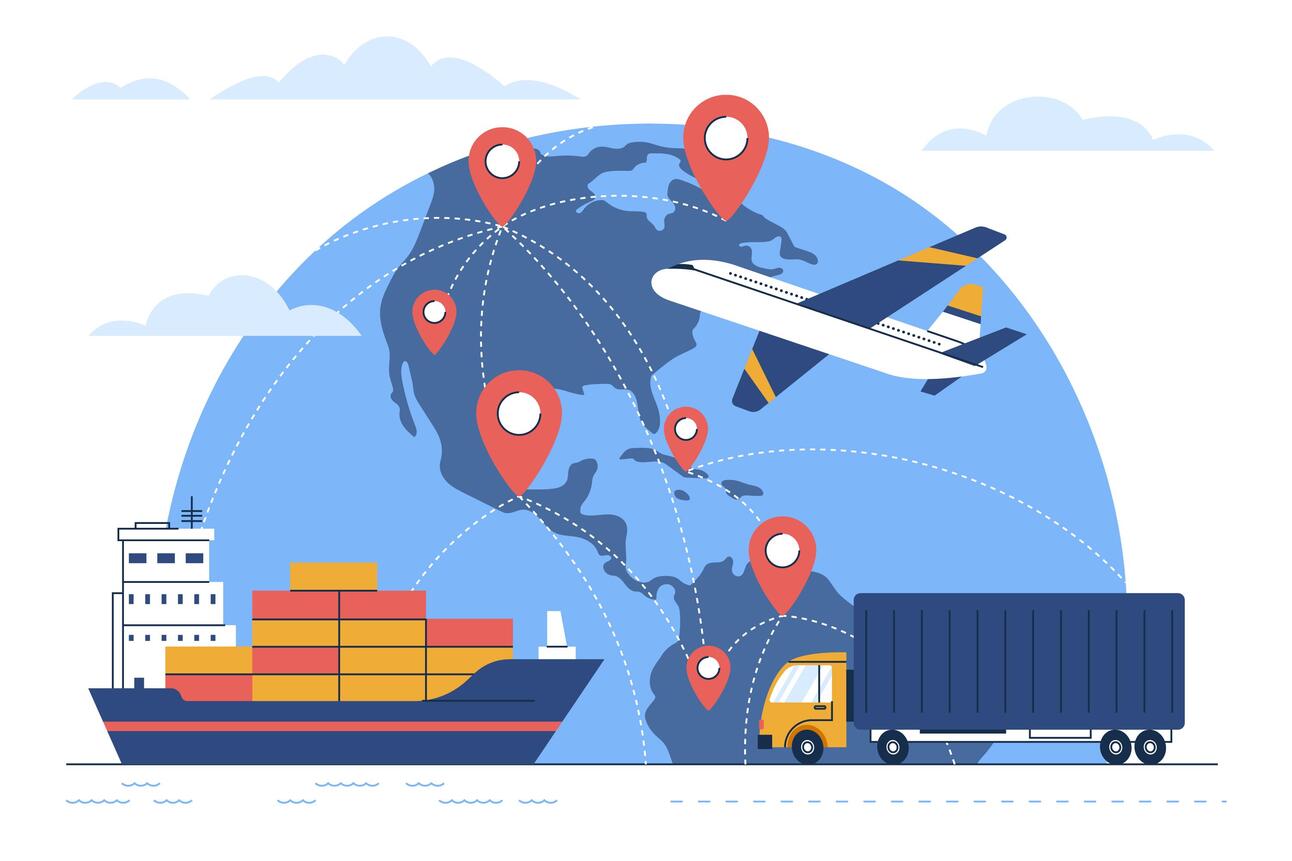- Warehouse Wisdom. Weekly.
- Posts
- Warehouse Wisdom. Weekly. 6/14/2024
Warehouse Wisdom. Weekly. 6/14/2024
Only the most relevant news for SMBs to improve logistics – picked, packed, and delivered without the bias.

Happy Friday!
And Happy Father’s Day to all the amazing dads out there! You know what time it is – time to break out the socks and ties. And we hope you’re ready because people are gearing up to spend $22.4 billion on gifts and goodies for Father's Day this year. Whether it’s a new classic tie or funky socks, dads everywhere are in for a treat!
And, just like your favorite dad jokes, we’re keeping it short and sweet this week. A few key headlines dominated the news, and we’re diving right into them. This week, we will catch you up on port labor talks, the Baltimore port reopening, FedEx Europe implementing job cuts, a new NASA study on shipping pollution, Walmart’s 20-minute app deliveries via drone, an increase in retail sales, and more!
So grab your coffee, put your feet up (and show off those new socks), and let’s get to it!
LOGISTICS VITALS
COMPANIES NOT OVERLY OPTIMISTIC ABOUT THEIR 2024 SALES GROWTH

For this week’s logistics vitals, remember when we asked if you’re optimistic that your company sales will increase this year over last year? Well, the results are in:
53.33% - NO
46.67% - YES
With all the inflation, political rollercoasters, and supply chain hurdles, it's no wonder optimism is taking a slight siesta. But hey, don't hang up your hopes just yet. Let's take this as a wake-up call for some strategic moves and clever thinking to make this year a winner!
OCEAN FREIGHT
PORT LABOR TALKS AND TENSIONS IN RED SEA INTENSIFY AMID PANAMA CANAL EXPANSION AND BALTIMORE PORT REOPENING

Labor talks at U.S. ports on the East Coast and Gulf of Mexico are causing a stir among retailers, manufacturers, and shippers, who are already dealing with longer transit times and higher costs. The International Longshoremen’s Association (ILA) contract expires on Sept. 30, covering 45,000 workers from Maine to Texas. ILA President Harold Daggett is not messing around, warning that a strike could happen if an agreement isn't reached by October 1. Strikes at seaports are rare, but the potential impact on products like food, medicine, and furniture has everyone on edge. So, let's hope they can work it out soon!
And tension heats up further in the Red Sea! The Houthi militants claimed responsibility on Wednesday, June 12, for attacking a Greek-owned cargo ship with drones, ballistic missiles, and even an unmanned surface boat. The poor Tutor coal carrier was left seriously damaged and at risk of sinking, putting the ship in need of rescue near Yemen.
Moving into some good news! The Panama Canal Authority is stepping up its game to improve capacity and ease restrictions that have been causing headaches for the past year. They're adding more slots to the locks to accommodate those big container ships and LNG carriers. The Neopanamax Locks will have nine daily transits starting July 11, and the Panamax Locks will have 25 starting July 22. In total, there will be 34 daily transits by late July, getting closer to the goal of 36 to 39 by 2025. At one point, they thought they might have to lower transits to 18, but luckily, that didn't happen. And now, they're on their way to smooth sailing!
And Baltimore is back up and running! The Port of Baltimore is back in action after the bridge collapse. It's open for business and ready for those big containerships to come in, so commercial shipping traffic through the Port is expected to bounce back to normal levels. Due to the finished cleanup, the channel is back to its original depth and width. So, all companies that avoided Baltimore during the chaos, it’s time to come back!
But who knew rebuilding a bridge could cost a jaw-dropping 1.7 billion dollars? The Department of Transportation estimates the preliminary costs to be between $1.7 billion and $1.9 billion. That's a hefty price tag, for sure!
You know what’s also hefty? US cargo volume is projected to hit a 2-year high this summer. The Global Port Tracker saw a 13.2% year-over-year growth in cargo volume in April, handling over 2.02 million TEUs - beating last month's projections. Expectations for inbound cargo volume from May to September have been raised, indicating a frenzy of goods coming our way. It looks like consumers are shopping up a storm, and retailers are stocking up like there's no tomorrow. Better prepare for peak shipping season; things are about to get crazy!
RAIL AND TRUCK FREIGHT
FEDEX EUROPE IMPLEMENTS JOB CUTS, WHILE CANADIAN RAIL AND BORDER LABOR TALKS INTENSIFY

FedEx is playing the job-cutting game in Europe, looking to cut between 1,700 and 2,000 back-office and commercial jobs. This move is all about saving some serious cash, with an expected annual savings of $125 million to $175 million by fiscal year 2027. The plan is subject to a lengthy consultation process, so it's not happening overnight. FedEx is also shuffling activities around Europe, consolidating them into shared centers for maximum efficiency. What those activities are, well, that's a mystery. FedEx isn't letting us in just yet.
FedEx isn’t the only one tightening the belt on costs – the trucking industry is feeling the effects of lower demand and inflation. In addition, the latest reports show that trucking insurance costs are on the rise as well. The industry can only hope for some reprieve in the near term.
And can you believe we’re still talking about the Canadian rail strikes? Last week's latest update is that it was temporarily halted with a tentative deal, but now Canadian border agents are threatening job action. They're ready to strike if a new labor deal isn't reached by Friday at 12:01 A.M. EST. Last week, they extended talks to Wednesday, but now they're making it clear that a strike is still possible. The union president is hopeful for a resolution, but they've set a firm deadline for the government to come up with a fair agreement. Let's hope they can avoid a strike and keep Canada's borders running smoothly!
WAREHOUSE SUSTAINABILITY
NASA STUDY SUGGESTS REDUCTION IN SHIPPING POLLUTION MAY HAVE CONTRIBUTED TO GLOBAL WARMING ACCELERATION

Could a reduction in shipping pollution have caused an increase in global warming? NASA thinks so. A study published in Nature says that cutting back on sulfur dioxide emissions in 2020 caused a "termination shock" that could heat up the oceans by 0.16 degrees Celsius over seven years. How? It turns out sulfur dioxide reacts with water vapor to make aerosols that reflect sunlight and create clouds that keep the ocean cool. So, less sulfur dioxide means more sun reaching the ocean. They even suggest brightening clouds as a way to cool the Earth.
Research on global shipping emissions and their impact on global heating is controversial, as some climate scientists don't agree on the extent of their influence.
WAREHOUSE TECH
WALMART ANNOUNCES 20-MINUTE APP DELIVERIES IN DALLAS-FORT WORTH

Walmart not to be outdone on drone tech – announces 20-minute app deliveries in Dallas-Fort Worth (DFW). Get ready, DFW customers! Walmart is taking drone delivery to the next level, where your orders through the app could be at your doorstep in just 30 minutes. Their DFW service, in partnership with Zipline and Wing, covers about 1.8 million households. But not everyone gets to play with drones just yet. It's a phased rollout, so more customers will join as things progress. Keep an eye on your app notifications to see if you're one of the lucky ones! Delivery notifications will pop up based on your account address.
MARKETPLACES
MAY RETAIL SALES SURGE WHILE INFLATION EASES

May saw some serious retail sales growth, with significant increases compared to the previous month and the previous year. Consumers are out there spending their hard-earned cash, driving some solid economic growth. Thanks to a strong job market and real wage gains, people can keep their wallets open. Inflation is a pesky issue, but it's mostly hitting services, not goods. May's numbers align with earlier this year, and those month-over-month increases are the biggest we've seen in over a year. This proves that April's slowdown was just an outlier. Total sales were up 2.13% year over year, and core sales were up 2.48% for the first five months of the year. These are the kinds of gains we would like to see!
And some more good news: Inflation in the US eased for the second month in a row in May, which is a good sign that the price hikes we saw earlier this year might be taking a nap. If this trend continues, the Federal Reserve might start thinking about turning down the heat on interest rates from their record highs. In May, consumer prices, excluding food and energy, only rose by 0.2%, compared to 0.3% in April. This was the smallest increase since October. Year-over-year core prices increased by 3.4%, a smidge below last month's 3.6% hike. Looks like the economy is playing a little game of "let's chill out" for now.
WAREHOUSE QUICK DELIVERIES
CARGO CRIME INCREASES, AMAZON WORKERS FILE FOR ARBITRATION, USPS’s OVERHAUL HITS EARLY SNAGS, AND MORE
Amazon Flex Drivers File For Arbitration Over Contractor Status
Amazon Workers Urge Skepticism About Company's Employee Data
Can Walmart Keep Up with Amazon? AI May Be the Deciding Factor
“The high level of imports expected over the next several months is an encouraging sign that retailers are confident in strong sales throughout the remainder of the year.”